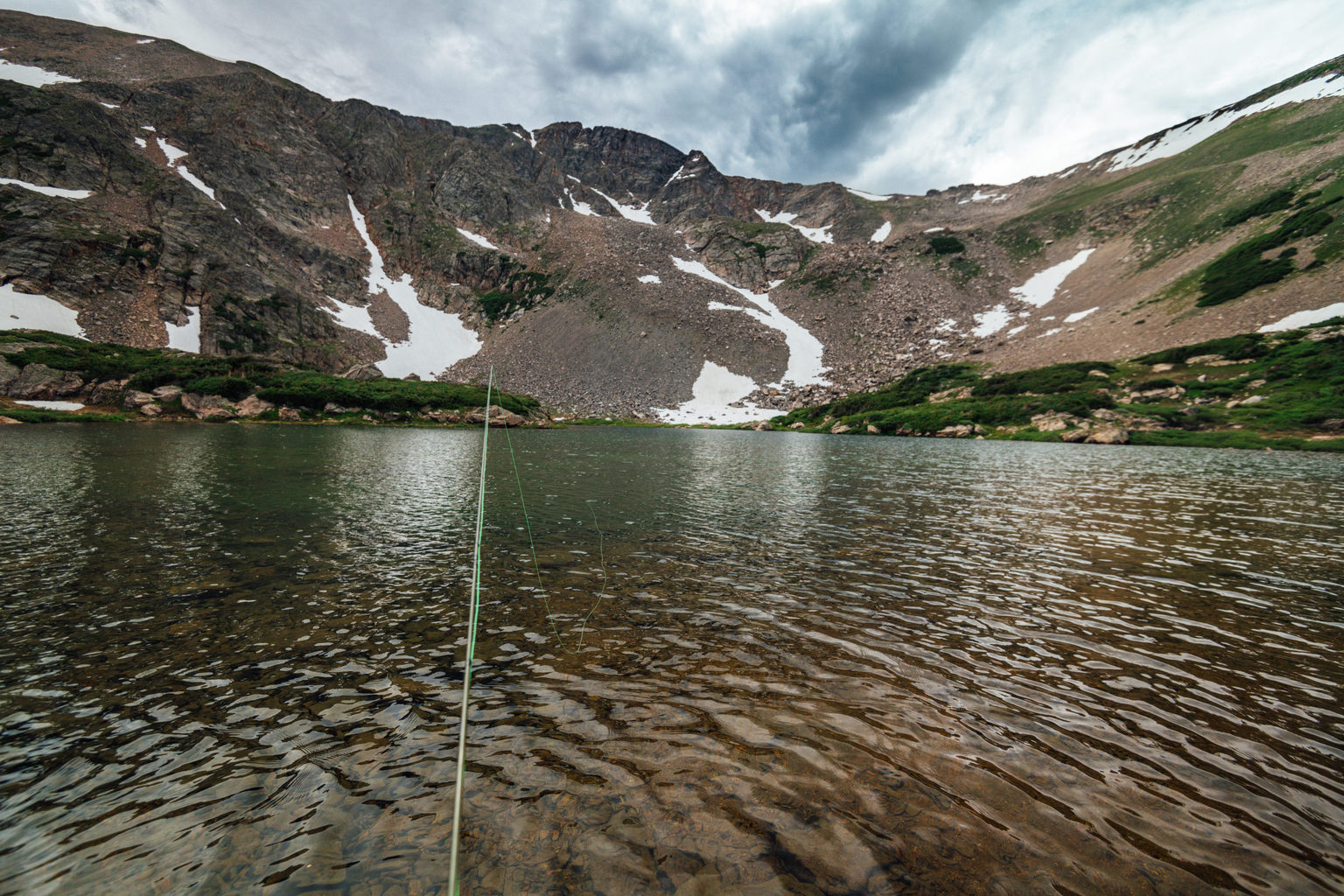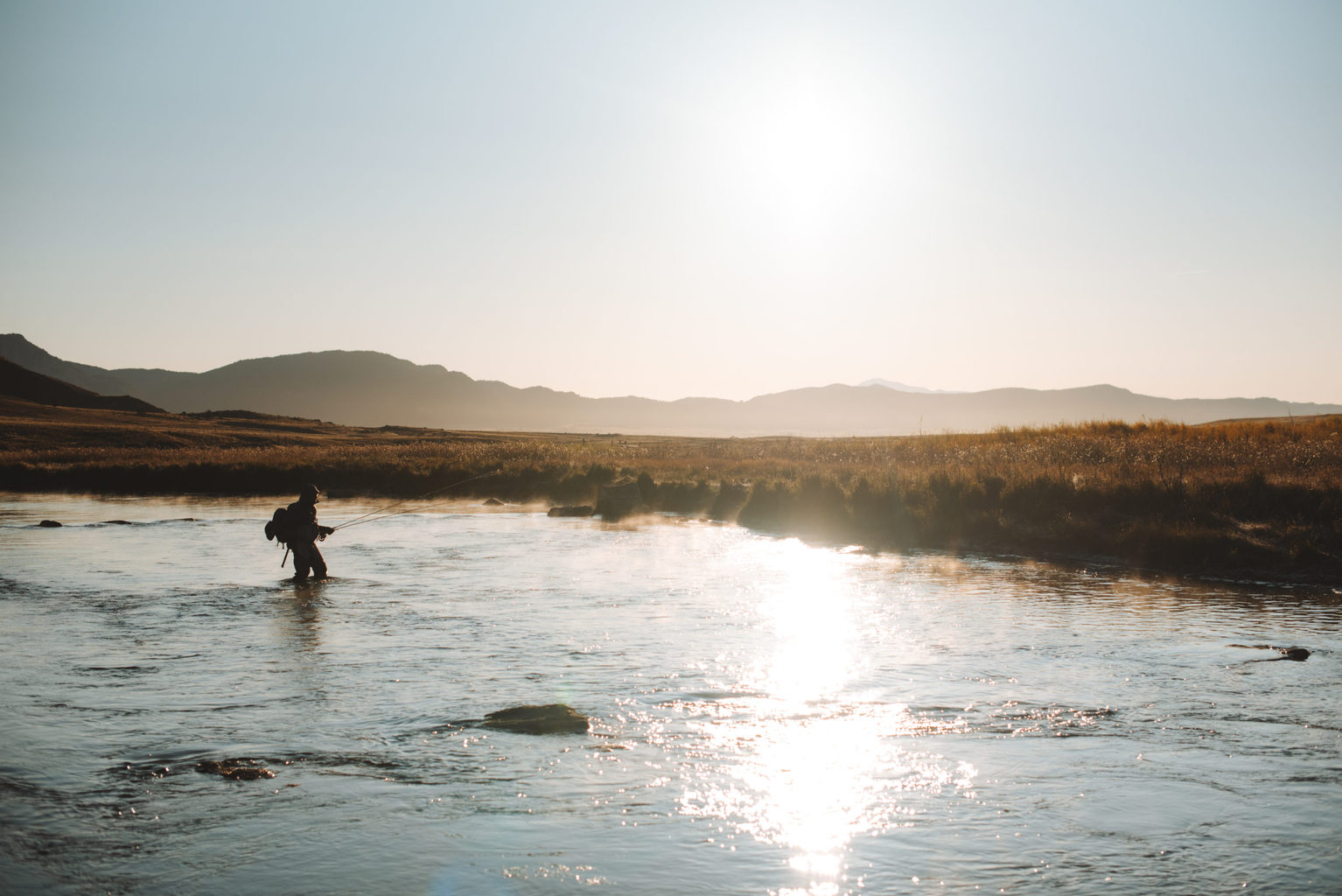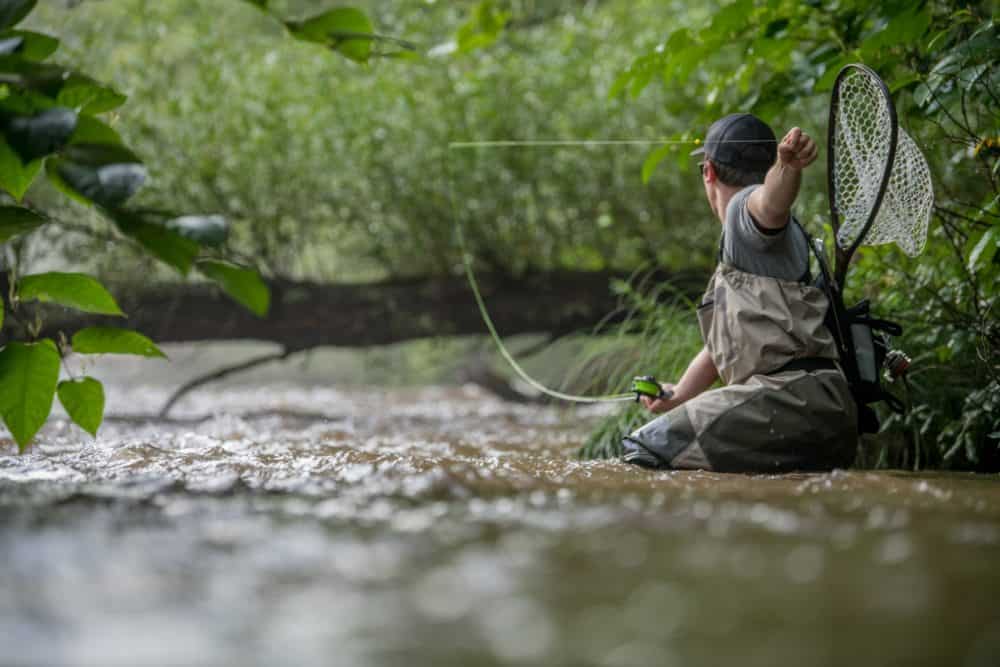Beginner Fly Fishing Casts You Need To Know
How to cast a fly is basic in its simplest form. This is what we are about to cover. There are, for all intents and purposes, two casts that you need to know.
- Overhead Cast
- Roll Cast
There are many other casts, such as the bow-and-arrow cast for casting in dense and brushy areas, but these two will get you through most of the situations you may encounter fly fishing. To practice these, the best way is to try and do them in an open place with still water, like a pond with not a lot of trees or cover around it. Lay the Line out on the water. Water tension on the fly line makes the rod easier to “load” which leads to less false casting.
The Overhead Cast
The Overhead Cast is explained as the basic cast everyone pictures.

Assuming the rod is in your right hand pull line off of the reel with your left hand. Start with your hands together thumb to thumb. Grip the rod on the handle with your fingers around the grip and your thumb pointed down the “spine” of the rod. Separate your hands, your right going back as if you were going to point at something directly behind you with your thumb, your left will go down towards your hip like you’re strumming a rather large guitar.
As you bring the rod back behind you your line will follow the motion. You are casting the line not the fly. For a novice angler look at your rod tip. You should stop your “backcast” when your arm is at 90 degrees and your rod tip just past that. When you’re in this position watch for your line to straighten all the way out behind you. When this happens you should feel the total weight of the line in the rod.

Casting Farther
When you want the line to go farther in front you have to repeat this process multiple times without the line touching the water again, pulling more line off the reel and feeding it up with your left hand gradually. This is False Casting. The left hand will pull the line down as you perform a back cast and feed line forward as you cast forward.
When you are satisfied that there is enough line out to equal the distance you want your fly to go, only then do you break your arm over all the way pointing your thumb at the intended landing zone all while loosening your grip on the line with the left hand. Where your right thumb points is where the fly should go.
Arm Position
The casting process is slower than you would expect. The amount of your arm that should move is often explained as this: Pretend there is a book gripped under your arm pit. Now perform a backcast and forward cast and do not drop the book.
An overhead cast can be broken into two types of casting, those techniques are The Single Haul and The Double Haul casts. The left hand is the difference-maker in these two casts.
Single Haul Cast
For a Single Haul Cast, an angler would essentially spread their arms while holding the line in their left hand and back casting to the two o’clock position with their right hand. As they then “turn over “ or move the rod into the casting position the left hand will move towards the right hand and let go of the line at the same time. This cast is essential and the “basic” fly cast. You need to know this one.
Double Haul Cast
The Double Haul Cast is essentially the single haul technique but a tug or Haul. So, after separating your hands on the back cast, immediately bring them back together at the peak of the back cast. Now, in the forward motion you will separate your hands and spread them out like you’re lying about the size of fish you caught, then bring them together. At that point when you feel the line tug forward simply let go. Every pull on the line by the left hand is a Haul. This is why this is a Double Haul cast. Every haul adds line speed, so this cast is especially useful when casting for distance or to better cast into the wind.

Roll Cast
The Roll Cast is arguably the most useful and underrated cast in fly fishing- master this cast. With the line in front of you on the water, lift your rod tip up towards the sky. As you do this motion the fly line will begin to make a bow or loop heading behind you. When the fly line crosses behind the vertical rod and makes a D with the straight part of the D being your rod and the line making up the curved part impart the same forward stroke you would during the overhead cast. The line will follow the loop and lay out in a straight presentation. It is a very simple cast but can be used in a lot of situations.
When To Use Each Cast
So, that was the “How,” so now is the “Why”. You would use an Overhead cast for any sort of casting presentation that is at a distance greater than say twenty feet. This is the basic fly fishing cast. When you first pictured yourself fly fishing this is the cast you picture yourself doing. We used this to target cover, breaks, or eddies. This cast is often used to present big flies like Streamers and very small flies like tiny Dry Flies because in either case putting yourself at a greater distance from the fish is beneficial. When in doubt you can most likely use an overhand Single Haul cast to drop the fly where you want it.
The Roll Cast is to fly fishing as the trim hammer is to a tool belt. Precise, accurate, and repeatable. The Roll Cast is used to present Nymphs or Emergers quite a bit. It can be used very effectively at sub-twenty foot distances. Small streams can be picked apart with roll casts from one position. This form of casting is also great for repeating drifts. Remember that often when a trout is in a “Feeding Lie” if that fish moves, generally another will move into that same spot. So if you catch fish number one, number two might be a rinse and repeat away. Roll Casts are also very helpful when there are a lot of overhanging branches and the like around you. This cast happens almost entirely in front of the angler.
Take your rod to some still water and give these a try. Once you feel like you get it right as much as you do it wrong, go find the streams in your area.
Fly Fishing Made Easy 👍
Our Quarterly Fly Club ships 1,000’s of flies to anglers all across the United States. Receive curated fly assortments selected for the season with in-depth articles on how to fish them. Great for beginners to learn and for intermediates to discover new flies.














